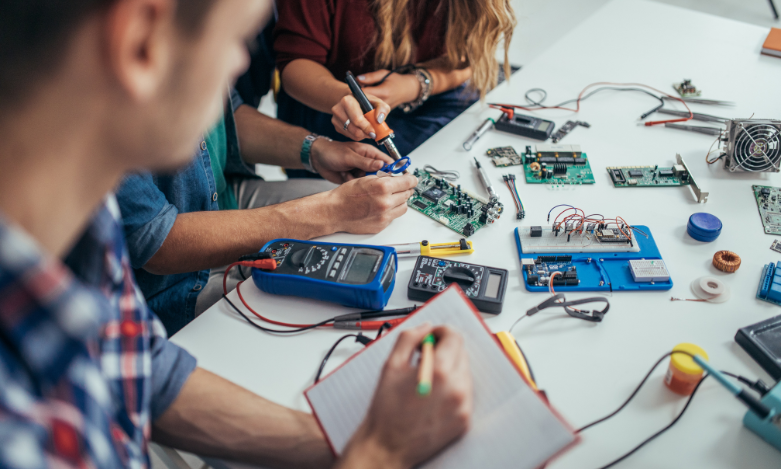Bullet Train Test using LabVIEW & TestStand Software
- Aug 24, 2023
- 4 min read
Updated: Mar 30, 2025

The Challenge
High-speed and commuter trains are extremely complex systems with thousands of components. The validation process is timely, highly complex, and expensive. Siemens Mobility Rail Solutions sought to develop a cost-efficient way to test high-speed and commuter trains.
The Solution
Siemens used NI hardware, TestStand software, VeriStand software, and the LabVIEW FPGA Module to build a fully functional digital twin of a whole train, including a functional simulation of all the wiring. Train control, traction, and brake controllers are integrated as real devices, but the system is easily extendable for any other controller.
Introduction
In 1879, Werner von Siemens invented the first electric locomotive. Today, Siemens Mobility Rail Solutions focuses on rail infrastructure and rolling stock. As a part of the rolling stock segment, we develop solutions for high-speed and commuter rail customers and are a global player in 60 countries around the world.
The rail and transportation industry has grown since the industrial revolution, with many regional differences. Each train is a customer-specific solution that must be integrated in an operator-specific environment. For regulated homologation processes, many requirements must be validated and approved. The train itself is a rare and expensive asset, so we need to find solutions that address the validation and homologation requirements with a more cost-efficient test environment.
There have been different train simulation solutions in the past, but they usually implemented a behavior of the interfaces to test a dedicated single controller. This application realizes the complete logic behind the interfaces and creates a realistic behavior of the train, including its whole electrical construction. Compared to earlier solutions with fixed dedicated test environments, this application is a highly scalable solution. An iron train is a physical, mocked-up train that emulates all the inputs and outputs of a real train. We could run the digital twin of a train on a laptop as well as at the level of an iron train, which makes this application the first of its kind. We designed it for use with many different variations of trains requested by our customers. This strategic investment is the backbone of all future Siemens Mobility projects in the high-speed and commuter rail market.
New Train Control Architecture
In 2011, the German rail company Deutsche Bahn AG ordered 170 high-speed trains with an option of up to 300 trains for more than $7.4 billion from Siemens Mobility. These trains, known as ICx, are completely different than conventional constructions, which reflect the changing demands of our markets. We based the architecture on a power car concept and a flexible train configuration.
Left: Live Feed from Train Driver’s Controls Front Panel, Right: Variant Schema of the Main Configurations.
This concept should address high flexibility in terms of train length and passenger count. We invented a new car-based train control architecture. Each single car of the train has an encapsulated train control system. Every new architecture introduces changes such as new communication bus technology, new automation systems, and new interfaces. To address the changes and the corresponding risks of new technology, we need adequate quality assurance.
The Application
Using PXI real-time devices, NI EtherCAT chassis, VeriStand, and a variety of I/O modules, we created a test bench that simulates complete train functionality of 40 different subsystems. We took advantage of the NI product portfolio for a complete set of I/O interfaces, a stable run time, and tooling setup, which is difficult in many industrial applications. There was no other solution that better suited our various interfaces and requirements in terms of modularity.
The main feature of our solution is the functional simulation. The core of this functional simulation is the representation of the electrical schema of the train in the simulation environment, which can be visualized and manipulated in real time. We import this electrical schema into VeriStand as an electro-mechanical logic model, which, combined with models that represent the functional logic of the physics and complex elements, like simulated controllers (for example, a door controller), enables us to build a complete digital twin of a train. Overall, we created a model library with 350 intelligent elements, like controller models, and 150 electrical models, like connectors, switches, and relays. Out of this library, a VeriStand project generator automatically creates a complex hardware-in-the-loop (HIL) system with more than 58,000 simulated components.

Finally, the test bench consists of 16 test racks: 12 cars of the train and four additional racks with test bench functionality such as fault injections. Each car test rack includes a complete train control system, communication buses, two brake controllers, and, in the power car types, the traction controller. We could integrate real components like this because the high reliability and determinism of well-integrated FPGA technology helped us simulate all necessary I/O interfaces (for example, 192-speed sensors). Each single rack is like a complete HIL environment.
We realized the simulation hardware with 12 PXI systems and and 42 NI-9144 EtherCAT chassis. We use PXI-6683H timing and synchronization modules to synchronize the PXI systems. We also use several different analog and digital CompactRIO and PXIe-2727 programmable resistor modules as interfaces to the train controller devices. Our test bench implements CAN bus, PROFINET bus, and other TCP-based protocols.
We could automatically generate nearly 70 percent of the model logic and VeriStand mapping from engineering and construction data sets. We imported the electrical schema data set out of an ECAD system. We generated the bus interfaces from digital interface specifications of the individual communication participants. This leads to a 100X cost reduction compared to an iron train.
Original Authors:
Matthias Reinholdt, Siemens AG Mobility Division
Edited by Cyth Systems








